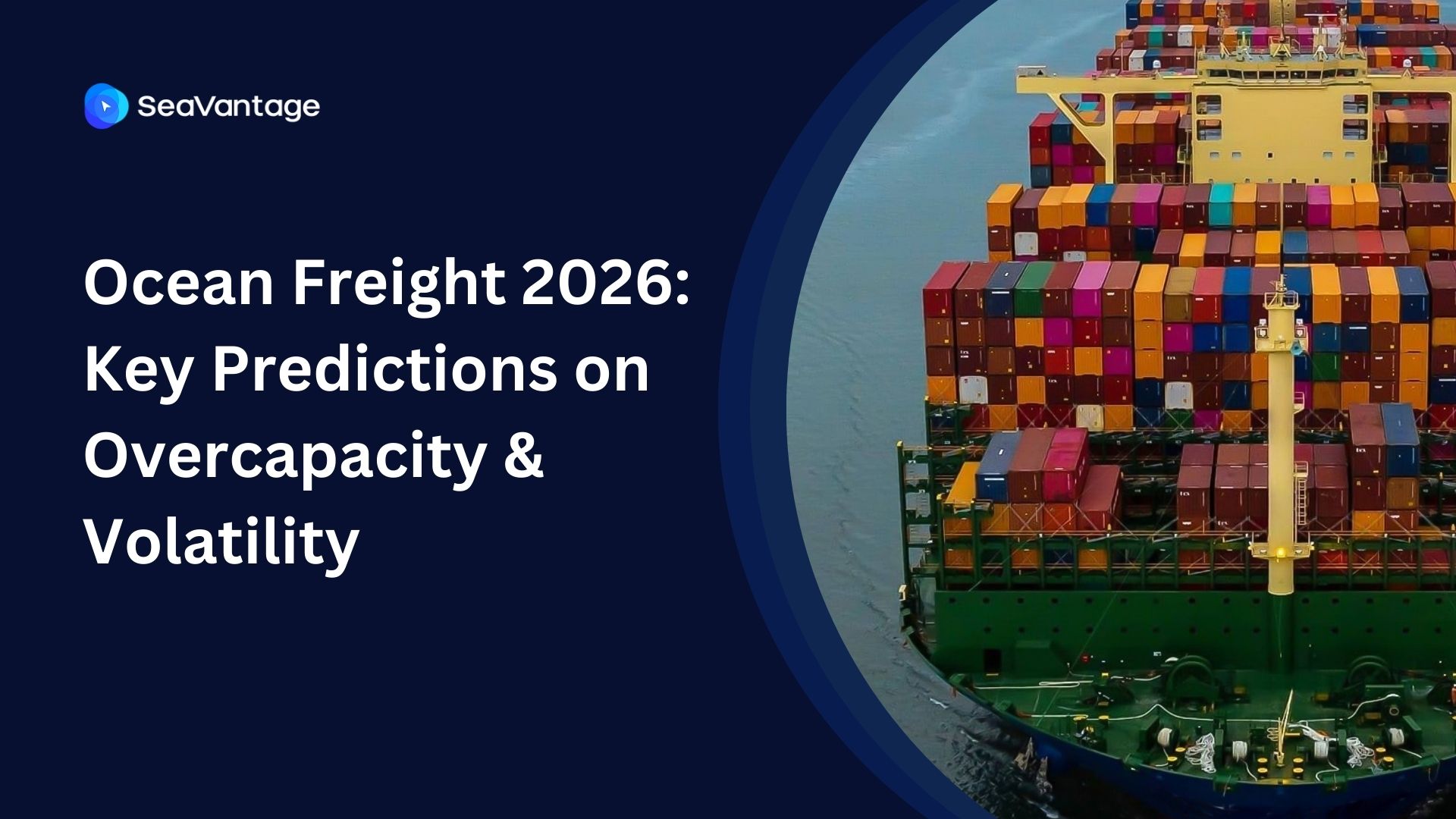AIS Live Vessel Tracking: The Power Behind Real-Time Ship Tracking Apps
Introduction
Maritime logistics is undergoing a rapid transformation. Real-time vessel tracking, powered by AIS (Automatic Identification System), is at the core of this change. Originally developed to improve safety at sea, AIS has evolved into a powerful tool used by developers, fleet operators, logistics managers, and business decision-makers. Today, it plays a vital role in ensuring operational transparency, improving routing efficiency, and enhancing compliance.
As maritime traffic grows and the demand for just-in-time delivery increases, understanding how AIS supports real-time ship tracking is crucial. This article breaks down the mechanics of AIS, the impact of real-time vessel tracking, and how ship tracker apps are driving the digital revolution at sea.
What Is AIS and How Does It Work?
AIS is a tracking system that uses VHF radio signals to transmit a ship's location, speed, course, and other identifying information at regular intervals. These transmissions are received by both coastal AIS stations and low Earth orbit (LEO) satellites, allowing for near-global coverage.
Each vessel equipped with an AIS transponder sends out data that includes:
- MMSI number (Maritime Mobile Service Identity)
- GPS location
- Course over ground (COG)
- Speed over ground (SOG)
- Heading and navigational status
Satellites or terrestrial receivers collect this data, which is then processed by software platforms and made available via APIs or visual dashboards.
Learn how AIS data powers real-time vessel tracking →

For developers building maritime analytics platforms, AIS provides the foundational dataset needed to track maritime activity. The combination of frequency, standardization, and reliability makes it ideal for both live monitoring and historical analysis.
Why Real-Time Vessel Tracking Matters
Real-time tracking isn't just about knowing where a vessel is. It has broader implications across several dimensions:
Operational Control
With real-time AIS data, fleet managers can monitor ship movements continuously and make immediate decisions regarding rerouting, port entries, or emergency responses.
Regulatory Compliance
Regulations from the International Maritime Organization (IMO) and national coast guards often require AIS usage. Real-time monitoring ensures compliance and provides a log of vessel behavior.
Supply Chain Visibility
For logistics managers, live tracking helps anticipate delays, adjust warehousing schedules, and provide accurate ETAs to customers. It turns maritime shipping from a “black box” into a transparent process.
Sustainability
Route optimization based on live tracking can lead to significant fuel savings, reducing carbon emissions and supporting ESG (Environmental, Social, and Governance) goals.
Key Benefits of Live Vessel Tracking
1. Enhanced Operational Visibility
Knowing the exact position of every ship at sea enables real-time fleet oversight. Operators can spot anomalies, monitor speeds, and prevent unauthorized deviations from planned routes.
2. Data-Driven Routing
Live data allows operators to redirect vessels in response to weather, port congestion, or geopolitical disruptions. Route changes based on real-time insights improve efficiency and reduce costs.
3. Crisis Management
In the event of a collision, grounding, or piracy incident, real-time tracking supports rapid response and investigation. Emergency teams can locate and contact vessels instantly.
4. Port Logistics Optimization
Ports and terminal operators use AIS data to plan berthing, crane availability, and cargo handling more effectively. This reduces idle time and accelerates turnaround.
5. Customer Experience
Shipping companies using live tracking can provide real-time updates to clients, building trust and offering competitive differentiation.
Use Cases Across Maritime Sectors
AIS and live tracking technology are used in a variety of maritime environments:
Commercial Shipping
Container lines and cargo operators rely on real-time data for voyage planning and ETA forecasting. Integration with supply chain platforms allows customers to track shipments from dock to door.
Offshore Oil & Gas
Oil rigs, FPSOs, and support vessels require continuous monitoring for safety and regulatory compliance. AIS helps ensure that only authorized vessels enter sensitive areas.
Fisheries and Maritime Security
Authorities use AIS to combat illegal fishing, especially in marine protected areas. By cross-referencing AIS data with licensing databases, enforcement teams can detect unauthorized activity.
Government and Naval Applications
Coast guards and naval forces use AIS to monitor shipping lanes, protect national waters, and support search and rescue missions.
The Rise of Ship Tracker Apps
The accessibility of AIS data has led to a surge in ship tracking applications. These apps offer real-time maps, customizable alerts, and API access to raw data—tools that were previously only available to large fleet operators.
Popular ship tracking apps like MarineTraffic, FleetMon, and VesselFinder have millions of users and process over 300,000 AIS broadcasts per day. Their features include:
- Interactive global vessel maps
- Notifications for port arrival or route deviation
- Historical voyage playback
- API integration for ERP and TMS platforms
Explore ship tracking features that empower maritime decisions →
For developers, these apps are often the front end for deeper systems that integrate AIS data with weather overlays, port analytics, and satellite imaging.
Challenges in AIS and Live Tracking
While AIS is powerful, it is not without limitations:
Coverage Gaps
Remote ocean areas may experience reduced coverage due to limited satellite or terrestrial station availability. However, satellite AIS (S-AIS) is expanding and improving this gap.
Data Integrity
AIS can be spoofed or manipulated, either intentionally (for smuggling or piracy evasion) or through equipment faults. Validation and cross-verification with radar or satellite imagery are critical.
Cybersecurity Risks
AIS data, if not encrypted or properly secured, can expose sensitive information about vessel movements. Developers must implement robust access controls and follow secure coding practices.
Future of Maritime Analytics
AIS data is increasingly being combined with artificial intelligence and machine learning to unlock predictive insights. These include:
- ETA predictions based on live conditions and historical voyage patterns
- Anomaly detection to flag unusual behavior, such as loitering or deviations
- Risk scoring for insurance or compliance evaluations
The growth of satellite-based AIS will continue to expand coverage and granularity, enabling near-real-time visibility even in the most remote parts of the world.
Conclusion
AIS-powered vessel tracking is more than just a technological enhancement—it's a competitive necessity. From supply chain agility to compliance assurance, the advantages are clear.
Developers building maritime platforms, logistics managers optimizing routes, and executives shaping strategy all stand to benefit from integrating AIS and live tracking capabilities into their workflows.
As real-time visibility becomes the norm, maritime operations will increasingly rely on data—live, accurate, and actionable.
2025년 9월, 주요 글로벌 항만에서 어떤 운송사가 가장 긴 선박 체류 시간을 기록했는지 확인해보세요. 트렌드를 비교하고, 지연을 파악하며, 전체 항만 데이터를 통해 운송 전략을 최적화할 수 있습니다.
2025년 8월, 주요 글로벌 항만에서 어떤 운송사가 가장 긴 선박 체류 시간을 기록했는지 확인해보세요. 트렌드를 비교하고, 지연을 파악하며, 전체 항만 데이터를 통해 운송 전략을 최적화할 수 있습니다.
2025년 7월, 주요 글로벌 항만에서 어떤 운송사가 가장 긴 선박 체류 시간을 기록했는지 확인해보세요. 트렌드를 비교하고, 지연을 파악하며, 전체 항만 데이터를 통해 운송 전략을 최적화할 수 있습니다.
Discover how RTTVP is a game-changer for Logistics Service Providers. Learn the 5 core benefits, from B2B customer experience to predictive operational planning.
Discover the top ocean freight predictions for 2026, from ship overcapacity to Suez Canal disruption, global sourcing shifts, and strategies for volatility.
Discover why container tracking breaks under complexity. Learn how B/L-based visibility improves ETA accuracy, boosts productivity, cuts TCO, and reduces data loss.



.svg)






.png)